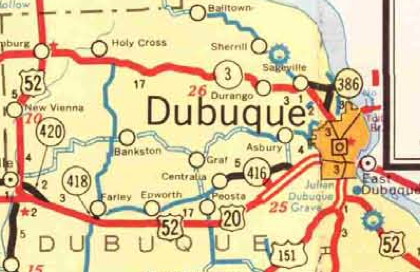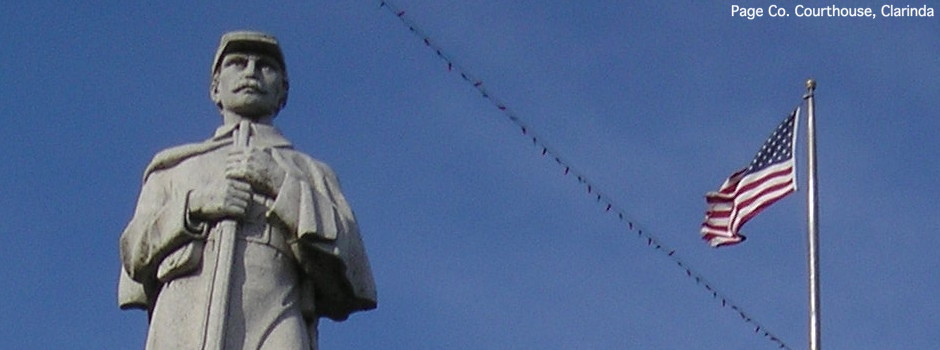
US 52’s future may be in a short-lived piece of its past. (1965 state map)
It took half a century, but the most significant portions of Iowa’s 1968 freeway/expressway plan have been realized or put perceptibly on track. There are still parts of US 20 and US 61 that are not four lanes, and same for US 30 east of Ogden, but for the first two the remainders will be on or near existing roads, and partially included in five-year plans.
Dubuque’s Southwest Arterial is not.
For decades, Dubuque has desired a route to the west connecting the northern and southern routes out of the city. Two lanes or four was less important than its existence in the first place. Part of that dream today is IA 32, a road the state took over and extended in 2002.
But while in much of Iowa it would be geographically and topographically (if not politically or environmentally) easy to shoot out a short connection, the Upper Mississippi River is not one of those places. The Driftless Area is great for mining lead, bird-watching, and reminding 19th-century immigrants of Switzerland. It’s not as great for building four-lane highways. Much more after the jump.
Dubuque really, really, really wants this road. An Internet search reveals Southwest Arterial articles from 2003, 2008, and 2009. The 2008 link is from KWWL, which also did the story shown below. There are two differences: First, the cost has gone up $18 million. Second, Dubuque is ready to sweeten the pot: It would voluntarily take back both IA 32 and current US 52 in the city (mostly both Central Avenue and White Street) off the DOT’s hands. Typically, getting a city/county to take control of a road doesn’t happen without lots of incentives or a state law. At one point, the Southwest Arterial was expected to continue south from 32’s current south end, but development outpaced hope.
Some of the money that has been dedicated to the Southwest Arterial was once intended to build a second bridge for US 20 across the Mississippi River. (Hmm. I guess the DOT has at least one other white whale left.)
There is a design for the road, one that includes interchanges at either end (with roundabouts on the ramps) plus one in the middle. However, that view doesn’t convey the third dimension involved. That topo map has a lot of contour lines on it. But the same website reveals one piece of tangible progress: A bridge being constructed for North Cascade Road over the projected alignment.
In the 1960s, US 52 was rerouted through Dyersville for a few years because the condition of the northerly route was so bad. Dubuque’s pitch in 2013 is for the same thing to happen, with 52 following the Southwest Arterial from US 20 at Seippel Road to US 61/151 between the US 151 interchange and the Key West Drive/Olde Davenport Road intersection. Traffic traveling east on 20 to go south on 61 would use the Southwest Connector instead of coming all the way through Dubuque and turning south just before the Julien Dubuque Bridge.
A reroute of US 52 would create two Iowa highway oddities and clear one up:
- A trans-state east-west route, IA 3, would terminate at city limits instead of another highway. This would be southeast of the current north end of IA 32, assuming Sageville doesn’t want in on this. In essence, the last 22 miles of IA 3 would become the state’s longest spur route.
- There would be a wrong-way multiplex of US 52/61/151 south of the present intersection at Bellevue Road. Going south on 61/151 would also be going north on 52, and vice versa, between Bellevue Road and the Southwest Connector.
- IA 3’s east end would be at a single point, instead of two separate one-way streets at a long interchange. In fact, removing that portion of IA 3 inside the city limits from the state rolls would actually be double the distance, because nearly the entire portion is on one-way streets.
All the highways of Dubuque have gone through major changes throughout the decades. IA 3’s endpoint has bounced from place to place. This would be one of the biggest changes of all and fit one of the last pieces in a puzzle the city has wanted to put together for a long time.
